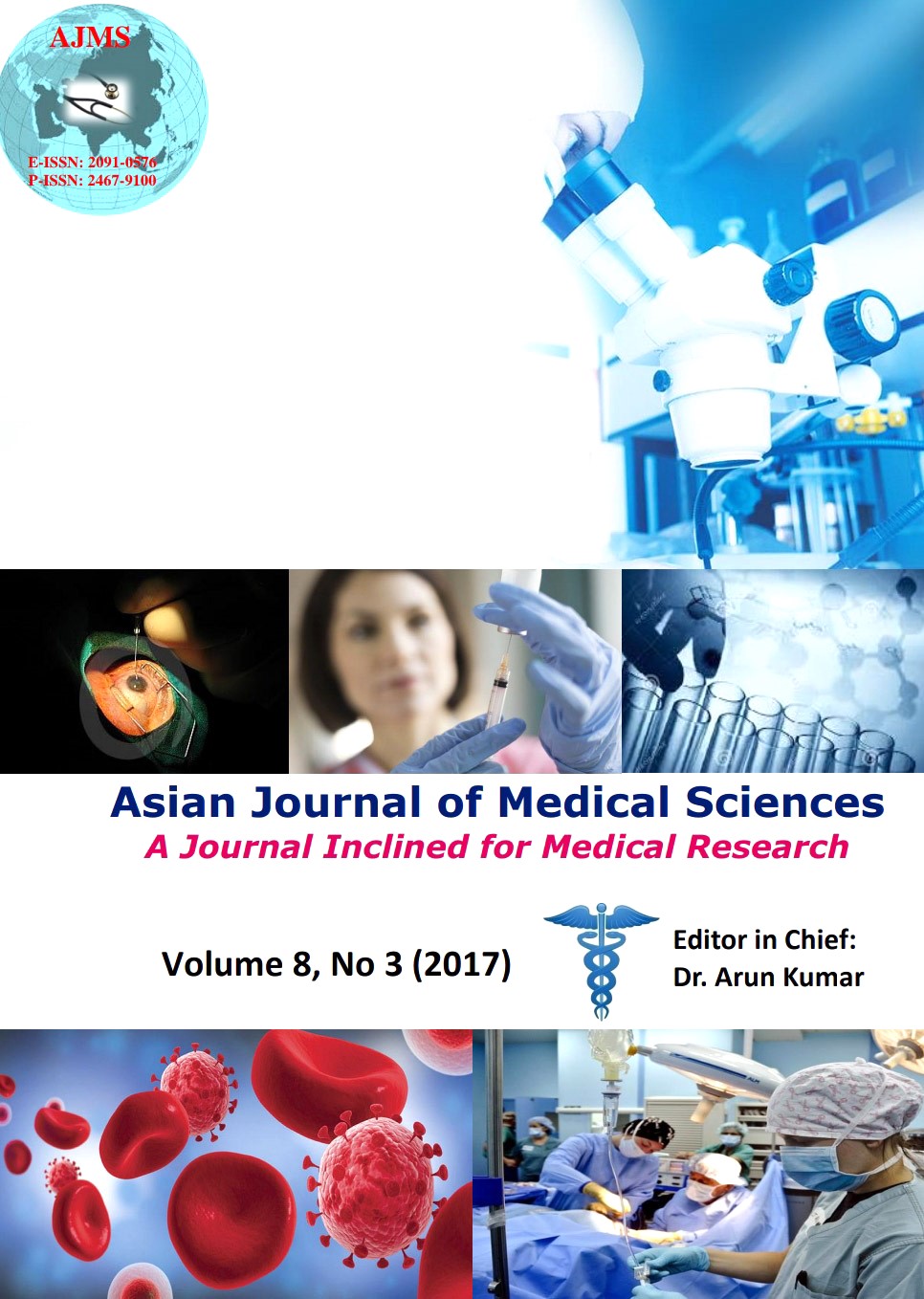Maternal vitamin A status in intrauterine growth retarded babies
Keywords:
Vitamin A, Intrauterine growth retardation, Birth weightAbstract
Background: Beside calorie and protein consumption micronutrients like folic acid, vitamin D and vitamin A have been postulated to play major role in intrauterine growth of neonates. Vitamin A compounds are critical for vision, reproduction, embryonic development, immune function and regulation of cell proliferation and differentiation.
Aims and Objectives: To determine the relationship of maternal serum vitamin A levels with birth weight of babies.
Material and Methods: Study group consisted of 58 randomly selected mothers who delivered at term small for gestational age babies (birth weight less than 2.5kg.). The control group comprises of 52 matched mothers, who delivered normal babies. Biochemical estimation of serum vitamin A was done by HPLC method using sigma reagent of all subjects.
Results: Significantly high (p<0.05) number of mothers in study group had low serum vitamin A level compared to mothers in control group. There was a linear relationship between vitamin A status and mean birth weight of the babies.
Conclusion: Although the low serum vitamin A level of mothers was significantly associated with intrauterine growth retardation, the exact effect of a vitamin A deficiency on the birth weight of babies remain unclear, but the finding suggests the importance of adequate vitamin A supplementation to pregnant mothers in India.
Asian Journal of Medical Sciences Vol.8(3) 2017 30-34
Downloads
Downloads
Published
How to Cite
Issue
Section
License
Authors who publish with this journal agree to the following terms:
- The journal holds copyright and publishes the work under a Creative Commons CC-BY-NC license that permits use, distribution and reprduction in any medium, provided the original work is properly cited and is not used for commercial purposes. The journal should be recognised as the original publisher of this work.
- Authors are able to enter into separate, additional contractual arrangements for the non-exclusive distribution of the journal's published version of the work (e.g., post it to an institutional repository or publish it in a book), with an acknowledgement of its initial publication in this journal.
- Authors are permitted and encouraged to post their work online (e.g., in institutional repositories or on their website) prior to and during the submission process, as it can lead to productive exchanges, as well as earlier and greater citation of published work (See The Effect of Open Access).




